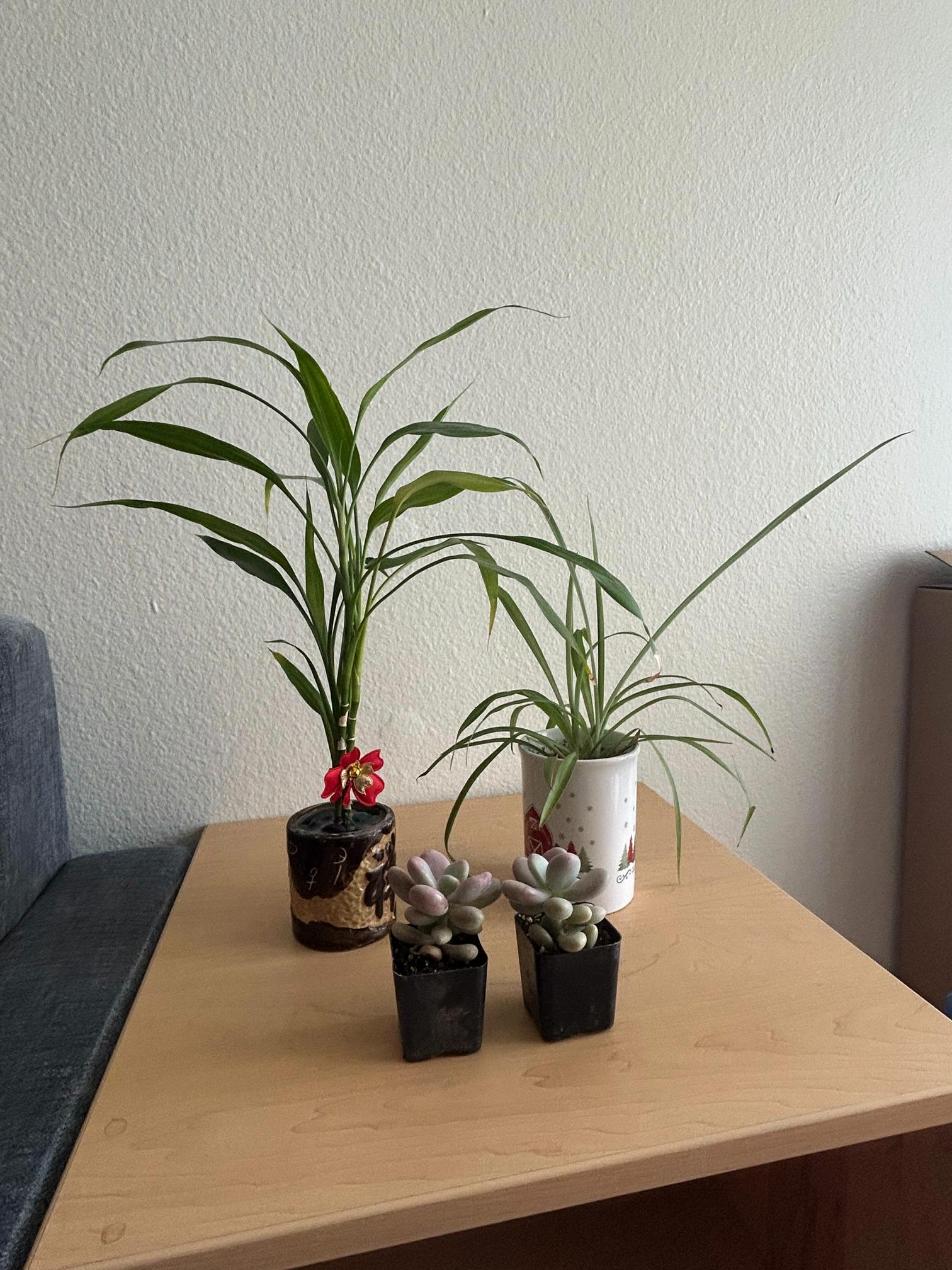





by Lindsey Bui
This zine explores a topic that might seem niche Asian American leadership in business—but that’s exactly why it deserves more open conversation.
I’m not a business major, nor do I work in the industry. My background is in STEM, and this project is an attempt to bridge those worlds with business: to explore how stories, data, and leadership intersect.
Every professional journey is powerful, no matter the degree, the discipline, or the industry. By sharing these stories, I hope to highlight perspectives that often go unspoken, and invite more dialogue across fields that don't always overlap.


The Bamboo C to the invisible advancement o workplace, par environments. representation particularly STE face challenges executive posi rooted stereot expectations th many Asian Am highlighting the experiences of corporate spac platform for th through the ba
During one of our focus group meetings in the UCLA Learning Assistant (LA) Program, a space where Asian American LAs come together to talk about our shared experiences and challenges: I asked a question: What does the bamboo ceiling mean to you? In that session, focused specifically on the bamboo ceiling effect, one of our members, Shirley, a secondyear STEM major, responded not with words, but with a drawing. Her illustration, featured to the left, captures the invisible barriers many of us face: the unspoken limits placed on our leadership, our upward mobility, and even our sense of belonging in academic and professional spaces. This zine builds on that conversation, gathering voices that push back, break through, and reimagine what’s possible.



Arashiyama Bamboo Forest in Kyoto, Japan captured by fellow friend Hien Nguyen
“a serene glimpse into the natural beauty of Japan’s iconic bamboo groves”
By Lindsey Bui
As a third-year Business Economics student, I’ve spent most of my time thinking about markets, strategy, and how to one day build my own startup. I’ve always been interested in entrepreneurship, not just the innovation side, but the challenge of building something from the ground up.
Lately, I’ve been thinking more seriously about what that journey might look like after graduation. What kind of founder would I be? What kinds of teams would I lead? What obstacles might I not even see coming? I recently came across the term “bamboo ceiling,” and to be honest, I didn’t know much about it before.
As someone who identifies as Asian and wants to lead my own company someday, this gave me pause. I’ve always believed that hard work and good ideas speak for themselves, but learning about this concept made me wonder if there are deeper dynamics at play, ones I haven’t thought about yet.
One of my biggest ambitions is to create a startup that blends tech and sustainability. But I also worry about being taken seriously as a young founder, especially if people make assumptions about me before I even speak. I wonder if I’ll have to work twice as hard to be seen as leadership material, or if I’ll have to “unlearn” certain cultural habits just to fit in. Still, I don’t see this as discouraging... I see it as something to be aware of. If we want to build better companies, we need to build more inclusive ones. Learning about things like the bamboo ceiling now might help me become a better leader later.
By Cindy Do
I have been thinking a lot about the bigger picture, not just where I want to work after college, but what it means to exist and lead in corporate America as an Asian American. The idea of the bamboo ceiling isn’t abstract to me; it’s something I see reflected in the numbers and, sometimes, in the people around me.
What’s been frustrating is that some first-gen immigrants seem to downplay these challenges. Maybe it's because they made huge sacrifices to come here, so acknowledging systemic bias feels like admitting it wasn’t the “land of opportunity” they hoped for. I get it, there’s a lot of sunk cost in that dream. But I don’t think we do ourselves any favors by pretending these ceilings don’t exist.
Appearance matters! Race is a part of that, whether we’re talking about dating, friendships, or careers. People gravitate toward those who look and think like them, especially in positions of power.
In the corporate world, this becomes really visible. At higher levels, it’s not just about competence; it’s about navigating complex social dynamics and politics. And if you don’t fit the mold, you’re often left out of the inner circle, no matter how skilled you are.
To be honest, I think this bias is stronger in places where Asians are few and far between. And yes, it often feels worse for women of color as they deal with multiple layers of bias that compound each other.
That’s why entrepreneurship feels so important to me. If you ' re building your own company, you ' re already at the top. You get to decide who leads with you, and sometimes, creating your own table is more powerful than waiting for a seat at someone else’s.
A conversation with Helen Chou Senior Director of Pricing Strategies Wharton Business School
Helen didn’t set out to work in business.
She dreamed of being a diplomat, until one question changed everything:
“I got curious... how do companies actually make money?” That curiosity led her into finance, then into pricing strategy, and finally, into leadership roles at several tech companies.
Helen’s journey wasn’t defined by barriers, more by fit.
She aimed to become a director, but her pricing-focused skills didn’t align with the role at the time. Instead of seeing this as failure, she shifted her strategy.
Helen hasn’t personally felt held back because of her identity, especially in tech roles.
“In tech, I didn’t see much of that ceiling. But in retail or traditional companies, it’s definitely there.”
She believes the conversation on Asian American leadership varies by industry and geography. In Silicon Valley, where Asian professionals are well-represented, asking for promotions or leadership roles isn’t taboo.
Don’t wait to be tapped: speak up, ask for opportunities, and know your value.
Helen’s story shows that leadership isn’t always a straight path, but it is yours to shape.
By Anonymous Senior Consultant
UCLA Anderson School of Management
As a senior consultant in a global firm, I’ve seen how much of this industry runs on both intelligence and relationships. That second piece, relationships, can be where ethnic background starts to shape your career trajectory. Asians make up less than 6% of the U.S. population, and in many regions, people’s only exposure to us might be through media. Whether intentional or not, these perceptions carry into the workplace.
A lot of us come from cultural backgrounds that emphasize deference, hard work, and staying out of conflict, values rooted in traditions like Confucianism. But American business culture rewards visibility, decisiveness, and the ability to lead with charisma. In my own journey, I found leadership development courses during my MBA especially eye-opening. They helped me shift from being “the dependable analyst” to someone seen as a future leader.
In the early stages of a consulting career, being the person who grinds the hardest and knows the numbers cold works. But at higher levels, different skills are required, like building influence, managing clients, and pushing strategic vision. Unfortunately, we often get locked into technical roles that don't translate to executive paths. Add to that the stereotype of Asians being “smart but quiet,” and it’s easy to see how advancement stalls.
On a systemic level, I’ve noticed that even in diverse offices, Asian representation drops sharply at the partner level In many cases, it reflects a business landscape where senior leadership (often white and male) tends to promote people they naturally connect with. That’s why Asian professionals may find more success in industries like tech or healthcare, where there’s a stronger existing presence.
Thank you for your contributions
Lindsey Bui
Cindy Do Helen Chou Anonymous